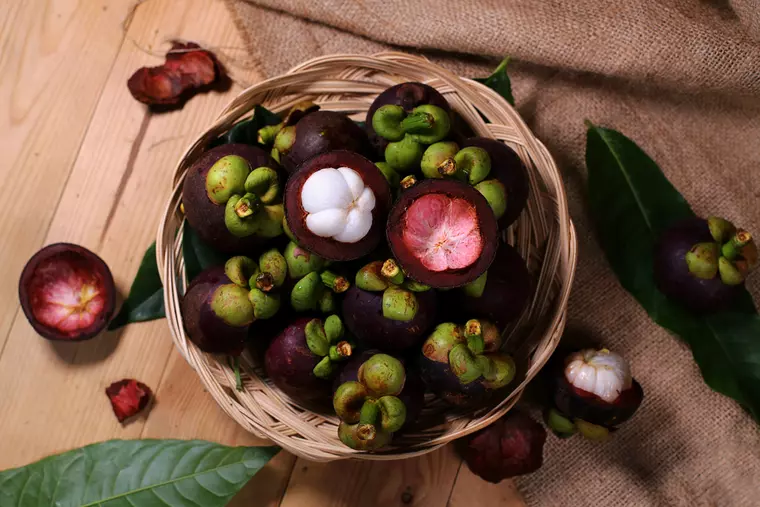Often called the “queen of fruits,” mangosteen (Garcinia mangostana) is a tropical treasure known for its sweet, tangy flavor and impressive nutritional profile. Native to Southeast Asia, this purple-skinned fruit is not only delicious but also loaded with antioxidants, vitamins, and minerals that support overall health.
In this blog post, we’ll explore:
✔ What makes mangosteen a superfruit?
✔ Key vitamins and minerals in mangosteen
✔ Health benefits backed by science
✔ How to eat and enjoy mangosteen
✔ Potential side effects and precautions
Let’s uncover why this exotic fruit deserves a spot in your diet!
Why Mangosteen Is a Nutritional Powerhouse
Mangosteen is low in calories but rich in essential nutrients. Here’s a breakdown of its key vitamins and minerals per 100g:
- Vitamin C – Boosts immunity and skin health (7.2 mg, ~12% DV)
- Folate (B9) – Supports cell growth and brain function (~31 mcg)
- Magnesium – Aids muscle and nerve function (~13 mg)
- Potassium – Regulates blood pressure (~48 mg)
- Calcium – Strengthens bones (~12 mg)
- Iron – Prevents anemia (~0.3 mg)
- Fiber – Supports digestion (~1.8 g)
But the real magic lies in its antioxidants, particularly xanthones, which have potent anti-inflammatory and disease-fighting properties.
Top 5 Health Benefits of Mangosteen
1. Boosts Immunity & Fights Inflammation
Thanks to its high vitamin C and xanthones, mangosteen helps:
- Strengthen the immune system
- Reduce chronic inflammation
- Protect against infections
2. Supports Heart Health
Research suggests mangosteen may:
- Lower LDL (“bad”) cholesterol
- Improve blood circulation
- Reduce oxidative stress in blood vessels
3. Promotes Healthy Skin
The antioxidants in mangosteen:
- Fight acne and eczema
- Slow skin aging by neutralizing free radicals
- Enhance collagen production
4. Aids Digestion & Gut Health
The fiber content helps:
- Prevent constipation
- Support a healthy gut microbiome
- Reduce bloating
5. May Help Manage Blood Sugar
Early studies indicate mangosteen may improve insulin sensitivity, making it beneficial for diabetes management.
How to Eat Mangosteen
Mangosteen has a thick purple rind hiding soft, juicy white segments inside. Here’s how to enjoy it:
- Cut or Twist Open – Gently slice or twist the outer shell to reveal the flesh.
- Remove the Segments – The edible part is the white, citrus-like pulp (avoid the bitter rind).
- Enjoy Fresh or Blended – Eat it raw, add to smoothies, or use in fruit salads.
💡 Pro Tip: Look for fruits with vibrant green stems—they’re the freshest!
Potential Side Effects & Precautions
While mangosteen is generally safe, consider these precautions:
- Allergies – Rare, but some may experience itching or rashes.
- Blood Thinning – May interact with anticoagulant medications (consult a doctor if on blood thinners).
- Pregnancy – Limited research; consume in moderation.

Mangosteen is more than just a tasty tropical fruit—it’s a vitamin-rich, antioxidant-packed superfood with benefits for immunity, heart health, digestion, and skin. If you can find it fresh (or as juice/powder), give it a try and experience its unique flavor and health perks!
Have you tried mangosteen?
Share your thoughts in the comments!

